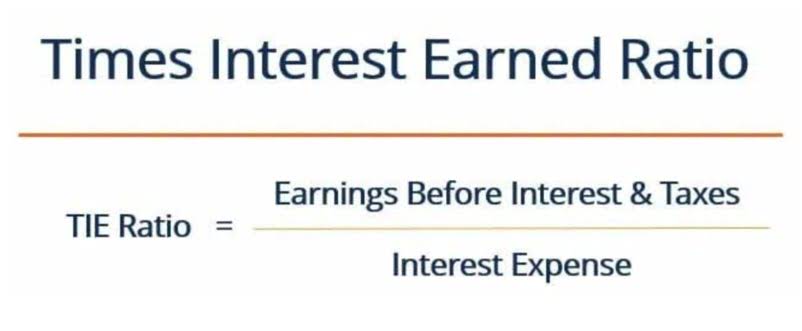
Retained earnings act as a reservoir of internal financing you can use to fund growth initiatives, finance capital expenditures, repay debts, or hire new staff. Retained earnings, at their core, are the portion of a company’s net income that remains after all dividends and Bookstime distributions to shareholders are paid out. Both types of reserves are essential components of a company’s financial toolkit, serving different roles in ensuring financial stability and strategic growth.
What is the retained earnings formula?

It shows a business has consistently generated profits and retained a good portion of those earnings. It also indicates that a company has more funds to reinvest back into the future growth of the business. These programs are designed to assist small businesses with creating financial statements, including retained earnings.
- When a recession hits and consumer spending decreases, the company faces a drop in revenue.
- In a firm’s balance sheet, the retained earnings are accounted under the shareholders’ equity.
- One key attribute of surplus reserve is that it is a voluntary action taken by the company’s management.
- Surplus reserve and undistributed profit are two important financial terms that are often used interchangeably, but they have distinct attributes that set them apart.
- One key attribute of surplus reserve is that it is a voluntary action taken by the company’s management.
- Dividend distributions signal strong financial strength within the company while retained earnings can be used to further future growth.
Undivided Profit: What It is, How It Works, Example

A revenue reserve is created from the net profit generated from the company’s core operations. By examining how TechBuddy utilizes its undistributed profits, stakeholders can gain valuable insights into the company’s growth prospects, financial stability, and management effectiveness. It’s important for investors and analysts to scrutinize how a company uses its undistributed profits, as it can provide insights into the company’s growth prospects and financial stability.
- It shows a business has consistently generated profits and retained a good portion of those earnings.
- But in actuality, a company would be able to retain more when the “net profits” are noteworthy.
- The desired strategy may depend on the amount of profit generated and the potential for value-maximizing projects.
- Retained earnings, on the other hand, specifically refer to the portion of a company’s profits that remain within the business instead of being distributed to shareholders as dividends.
- It can go by other names, such as earned surplus, but whatever you call it, understanding retained earnings is crucial to running a successful business.
Retained Earnings: Everything You Need to Know for Your Small Business
This strategic use of undistributed profit enables the company to grow without taking on additional debt or diluting ownership by issuing more shares. One key attribute of undistributed profit is that it represents the cumulative earnings of the company that have not been paid out to shareholders. This can be seen as a measure of the company’s financial performance over time, as undistributed profit reflects the company’s ability to generate profits and reinvest them in the business. Surplus reserve and undistributed profit are two important financial terms that are often used interchangeably, but they have distinct attributes that set them apart.

Join the Social Finance

Surplus reserve can also be used to fund growth initiatives, such as acquiring new assets or expanding into new markets. Capital reserve refers to a reserve created from capital profits or gains a company earns through non-operating activities, such as selling assets, re-valuating investments, or capital contributions. On the other hand, a revenue reserve is created from the retained earnings or profits earned by a company from its normal operating activities, such as sales of goods or services. The revenue reserve is contra asset account the reserve created out of the company’s profits generated from its operating activities during a period and retained to expand its business or meet contingencies in the future. A Revenue reserve account acts as an internal source of funding or finance and helps grow the company quickly. One key attribute of surplus reserve is that it is a voluntary action taken by the company’s management.
- Surplus reserve refers to the portion of a company’s profits that is set aside for specific purposes, such as future investments, expansion projects, or to cover potential losses.
- Ultimately, the company’s management and board of directors decides how to use retained earnings.
- On the other hand, a revenue reserve is created from the retained earnings or profits earned by a company from its normal operating activities, such as sales of goods or services.
- This strategic use of undistributed profit enables the company to grow without taking on additional debt or diluting ownership by issuing more shares.
- Failure to comply with these requirements can result in penalties or other consequences for the company.
- After the initial public offering (IPO), Apple Inc. kept all its profits as revenue reserve for a few years.
- If the firm has managed to increase its shareholder equity, retaining its earnings is a good strategy.
We’ll explain everything you need to know about retained earnings, including how to create retained earnings statements quickly and easily with accounting software. This content is for general information purposes only, and should not be used as a substitute for consultation with professional advisors. Another important aspect of surplus reserve is that it is subject to certain legal and regulatory requirements. In many jurisdictions, companies are required to maintain a minimum level of surplus reserve as a safeguard against financial instability. Failure to comply with these requirements can result in penalties or other consequences for the company.
Revenue vs. net profit vs. retained earnings
Unlike dividends, which are typically paid out to shareholders on a regular basis, surplus reserve is a strategic decision made by the company to retain a portion of its profits for future use. This demonstrates the company’s commitment to long-term financial stability and growth. Companies carrying out a significant amount of audit and financial statement undistributed profits that have accumulated in the company over time are called preparation are most likely to be subject to the surcharge. The main difference between retained earnings and profits is that retained earnings subtract dividend payments from a company’s profit, whereas profits do not.

